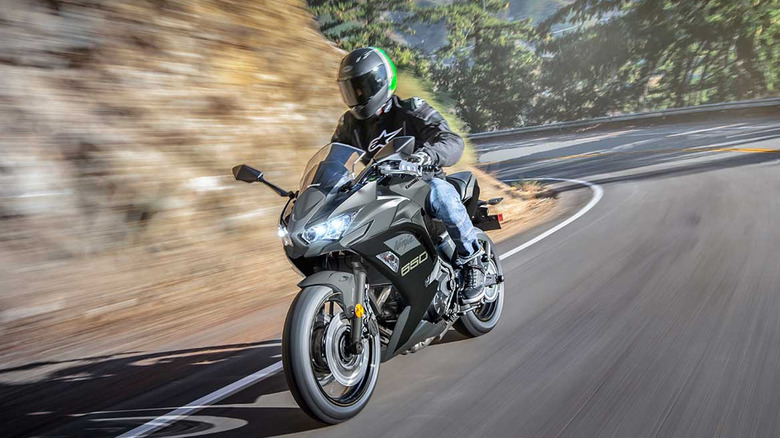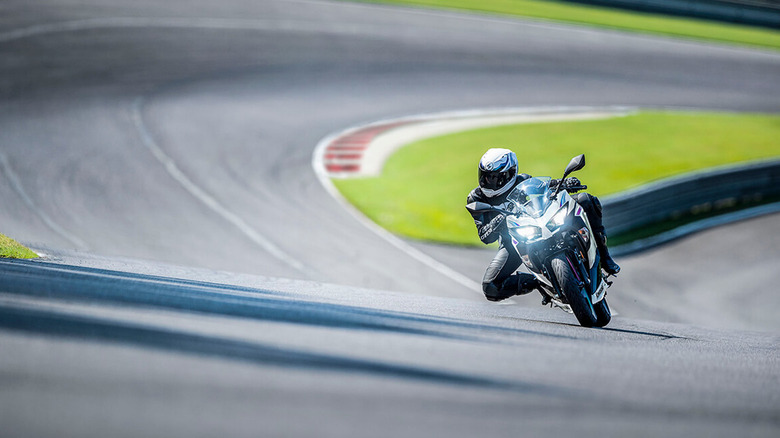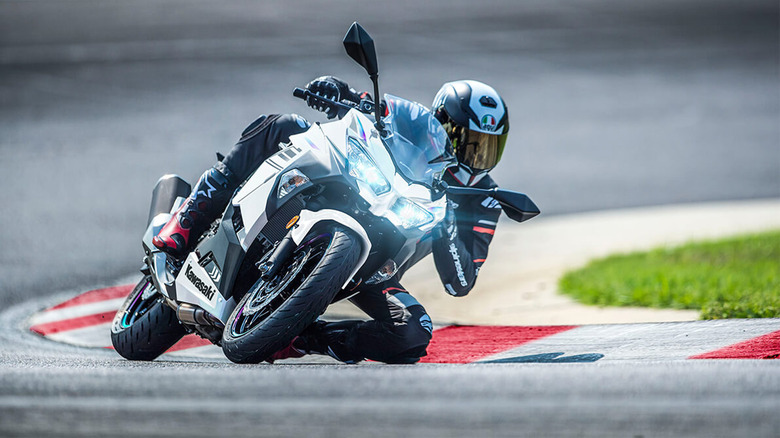Kawasaki Ninja 400 Vs 650: What's The Difference?
Picking up a new bike is exciting, and if you've narrowed your sights on Kawasaki, you've made a solid choice. The Kawasaki Ninja – one of the most famous bikes in the world – is particularly great, but the Ninja family is also home to many different options. It can be overwhelming to decide which is best for you, especially since the Ninja line is broken up into various subsections. The Sport category of Ninja motorcycles includes the Ninja 400 and Ninja 650, both targeted at a different type of buyer.
The 400 comes with a compact 399cc engine, while the 650's are built with a heftier 649cc engine. This helps the Ninja 650 hit a top speed of around 130 mph while the Ninja 400 hits about 105 mph. Both bikes are great options for seasoned riders, but new riders can learn the ropes on a Ninja 400, too. The 650 is one of the best motorcycles Kawasaki has ever made, thanks to its reliable engine and build quality, although the 400 is also an impressive bike in its own right.
How do they differ for the average rider?
Looking at the base models, several details separate the two. Newer riders benefit from things like lower seat height and lower curb weight as it gives a better sense of control, and the Ninja 400 comes ahead in both areas. The curb weight of a non-ABS Ninja 400 is 361.6 pounds, increasing to 366 pounds with ABS. The Ninja 650 is far heavier at 423.4 pounds and 421.2 pounds for ABS and non-ABS, respectively. ABS refers to the Anti-lock Brake System safety feature that helps reduce your bike's speed in an emergency. Seat heights are roughly the same, but the 400 comes in a tad lower at 30.9 inches versus 31.1.
For highway riding with the Ninja 400's 399cc engine, you'll have no problems cruising at 75 mph. It packs enough punch to pass other drivers without too much stress on the bike. The Ninja 650 can do this with ease — and you might have a steadier ride thanks to the extra weight – but if this is what you're using your bike for, you can save a lot of money by purchasing the Ninja 400. While the 650 goes much faster, your average rider isn't going to come close to 130 mph unless they're willing to risk a hefty fine.
What's the price difference?
A big difference separating the Ninja 650 from the 400 is the price. A new Ninja 400 retails from $5,299, while the 650 starts at $8,299. This price difference of $3,000 is nothing to scoff at and may be too huge a leap in budget if you're looking for a new motorcycle. Consumers more inclined to look for a bike around a certain price point rather than assessing top speeds will get by just fine with a Kawasaki Ninja 400.
Safety comes at a price, as the ABS editions cost more. The Ninja 650 ABS version bumps the price to $8,899, while the Ninja 400 ABS begins between $5,699 and $5,899. There's still a massive price difference between the two, but if you're concerned about the protection offered with ABS, you'll need to spend extra. On top of the price, beginner riders typically benefit from a smaller engine that's easier to handle, and that would give the Ninja 400 an edge for those consumers purchasing their first motorcycle. Both bikes come with a one-year limited warranty in case anything goes wrong.


